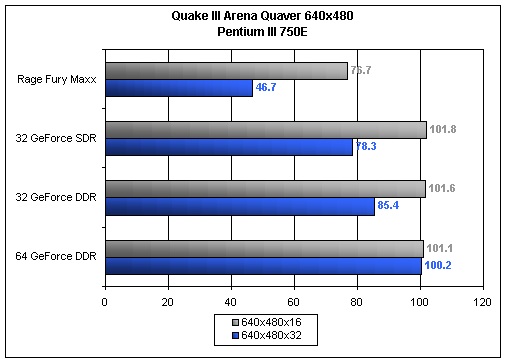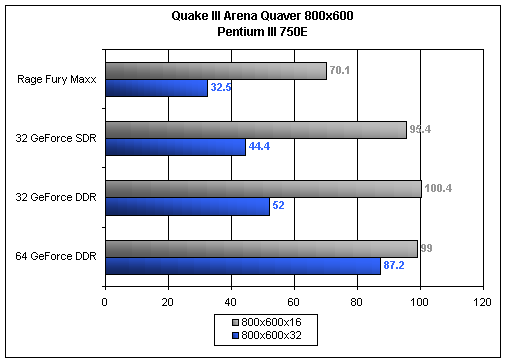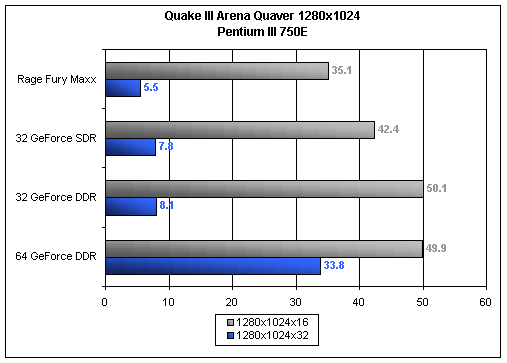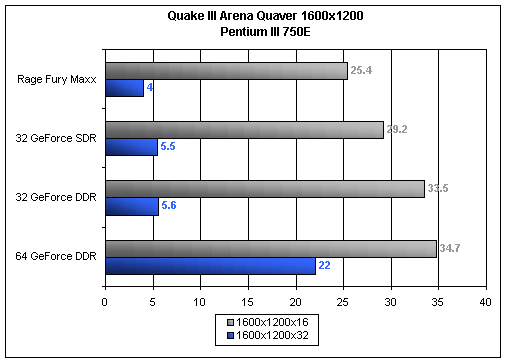Pentium III 750E - Quake III Arena Quaver.dm3





It is not until the graphics system is put under extreme stress does the 64 MB GeForce begin to shine. Although Quaver is a high stress benchmark, it actually does a very good job at modeling real world gaming scenarios. The typically used demo001.dm3 is a good benchmark for showing how a card will react under most conditions, however Quaver addresses the stressful conditions that Quake III Arena often throws out.
The performance differences between the 32 MB GeForce and the 64 MB GeForce are present from the start. As soon as the resolution is pushed up to 640x480x32, the 64 MB GeForce shows what it is made of. The 32 MB GeForce actually begins to texture swap at this point due to the large amounts of data being passed to the card. The use of the AGP bus to transfer textures begins to become apparent to the user at this resolution as well: the game begins to get choppy and alternates from slow to fast during game play. The 64 MB GeForce, on the other hand, reacts smoothly at this resolution. We can be assured that it is the differences in memory sizes that cause the increase in performance because the GeForce is still operating at the same clock speed and memory speed.
The real difference comes at 1024x768x32. This resolution is commonly thought to be playable on a 32 MB DDR GeForce even with high texture detail enabled. As the Quaver demo shows, the 32 MB GeForce is relying heavily on system memory to store additional textures, a fact represented by the extremely slow FPS rating of 15.9. The 64 MB GeForce, on the other hand, can easily handle the large textures passed to it from the processor. By avoiding the AGP bus as a mode of texture transfer, the 64 MB GeForce is able to earn a playable FPS rating of 57.
You may be asking yourself why the ATI Rage Fury MAXX does not perform similarly to the 64 MB GeForce. Both have the same amount of RAM, right? Well, not really. The way the Rage Fury MAXX is set up it actually gives each one of its Rage 128 processors 32 MB of RAM to work with. While this results in a total card memory amount of 64 MB, each processor is only able to use 32 MB of this memory to render its frame. This makes it nearly identical to the function of a single GeForce chip except for the fact that the two processors work in conjunction on the MAXX. 64 MB total RAM? Yes. 64 MB RAM for processor use? No.










1 Comments
View All Comments
Dr AB - Friday, May 8, 2020 - link
Woww what an amazing article! There were a lot of things that I didnt even knew glad that I read it. Its fascinating how things have progressed in 20 years.